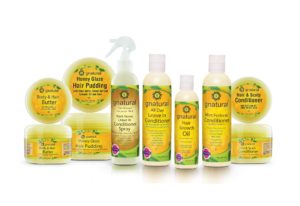In virtually any main metropolis in the U.S., you’ll be able to look out on a crowded road and see a breadth of range that might have been unprecedented only a hundred years in the past.
America has usually been known as a “melting pot” as a consequence of its historical past of immigration and the number of cultures and traditions which have discovered a house on its shores.
Still, to actually honor the numerous individuals who make their lives right here, we should see them first.
This begins with how we speak about, perceive, and classify pores and skin tone, from the medical neighborhood to skincare and past.
As it stands now, a lot of the collective understanding of pores and skin tone is dictated by the Fitzpatrick Skin Types (FST). If you’ve been to a dermatologist, you could be accustomed to them.
The Fitzpatrick Skin Type (FST) scale was developed in 1972 by Thomas Fitzpatrick as a way to find out the probability that totally different shades of pores and skin would or wouldn’t burn with publicity to daylight or during phototherapy.
During the invention of the dimensions, Fitzpatrick’s sufferers had been initially white individuals, rendering a scale of I to IV that displays lighter pores and skin tones. In 1988, V and VI had been added to incorporate darker pores and skin tones.
The 6 varieties denote the quantity of melanin that’s current in the pores and skin. This determines how doubtless the pores and skin will burn with publicity to UV radiation, together with solar and different types of mild remedy.
Type I has the least quantity of melanin and is more than likely to burn, whereas Type VI burn tendency is much less as a consequence of extra melanin current.
The FST is used in numerous medical settings for:
While the FST remains to be extensively used in the medical neighborhood, it has limitations that shouldn’t be ignored.
First, it entails a subjective, self-reported survey. Questions inside the FST associated to sunburn, frequency of tanning, and extra could be simply misinterpreted.
Studies have proven that there’s lack of reliability with responses to those particular questions, particularly because it pertains to totally different cultures and races.
Second, the FST doesn’t deal with the extra nuanced pores and skin reactions to phototherapy—like irritation, tenderness, and itching—that may be extra pronounced in darker pores and skin tones.
According to 2020 research, there are particular concerns wanted when treating pores and skin of colour. For occasion, the National Psoriasis Foundation notes that darker pores and skin tones could require greater doses of phototherapy, and that many practitioners could also be uncomfortable doing so as a consequence of inexperience with these pores and skin varieties.
To achieve this, the questions may very well be revised to handle your entire spectrum of reactions that current in various levels on totally different pores and skin varieties.
The FST is a generally used customary in medical settings to debate numerous pores and skin tones, from pale to darkish. These 6 pores and skin varieties or tones are extensively adopted even outdoors of the medical setting.
FST pores and skin tones had been utilized by tech corporations as the information set for constructing the algorithm in services and products akin to Google Search and Photos, in accordance with an article by Reuters.
However, having solely 6 pores and skin varieties created challenges and limitations for AI and machine studying. On prime of that, the article famous that having 4 classes for white pores and skin and one every for black and brown pores and skin disregards range amongst individuals of colour.
As a end result, Google is adopting the Monk Skin Tone Scale. It’s an expanded scale that’s extra reflective of precise pores and skin tone range.
How did a medical scale initially meant to find out pores and skin’s response to daylight grow to be the usual for figuring out pores and skin tone, usually conflated to find out ethnicity and race?
An nameless survey of dermatologists performed by Dr. Susan Taylor and colleagues, 31 percent mentioned they used FST to explain the affected person’s race or ethnicity.
Pew Research has reported that half of the U.S. inhabitants shall be of non-European descent by 2050.
Furthermore, the U.S. Census Bureau notes that the proportion of people that reported a number of races has elevated greater than another single-race group, from 2.9 p.c of the inhabitants (9 million individuals) in 2010 to 10.2 p.c of the inhabitants (33.8 million individuals) in 2020.
As the excellence of pores and skin tones blur, we have to broaden our considering outdoors of using the FST alone.
We want to acknowledge its unique intention and take the information of what we’ve realized inside pores and skin well being to develop higher methods to debate pores and skin tones.
Clinically, this work has been ongoing. However, we have to translate and apply these learnings to be used in skincare product improvement, therapies, and medical schooling.
Both clinically and culturally, we have to take the chance to have a look at the FST with a brand new perspective as properly.
Jenny Yu joins the Healthline Medical Affairs Team with expertise in medical analysis, schooling, and medical apply. She has expertise in medical operations, analysis processes, and innovation. Her ardour is to coach in the realm of situations, prevention and wellness. Her function with the Medical Integrity Team is to make sure correct and constant medical content material in the strategic progress of Healthline.




